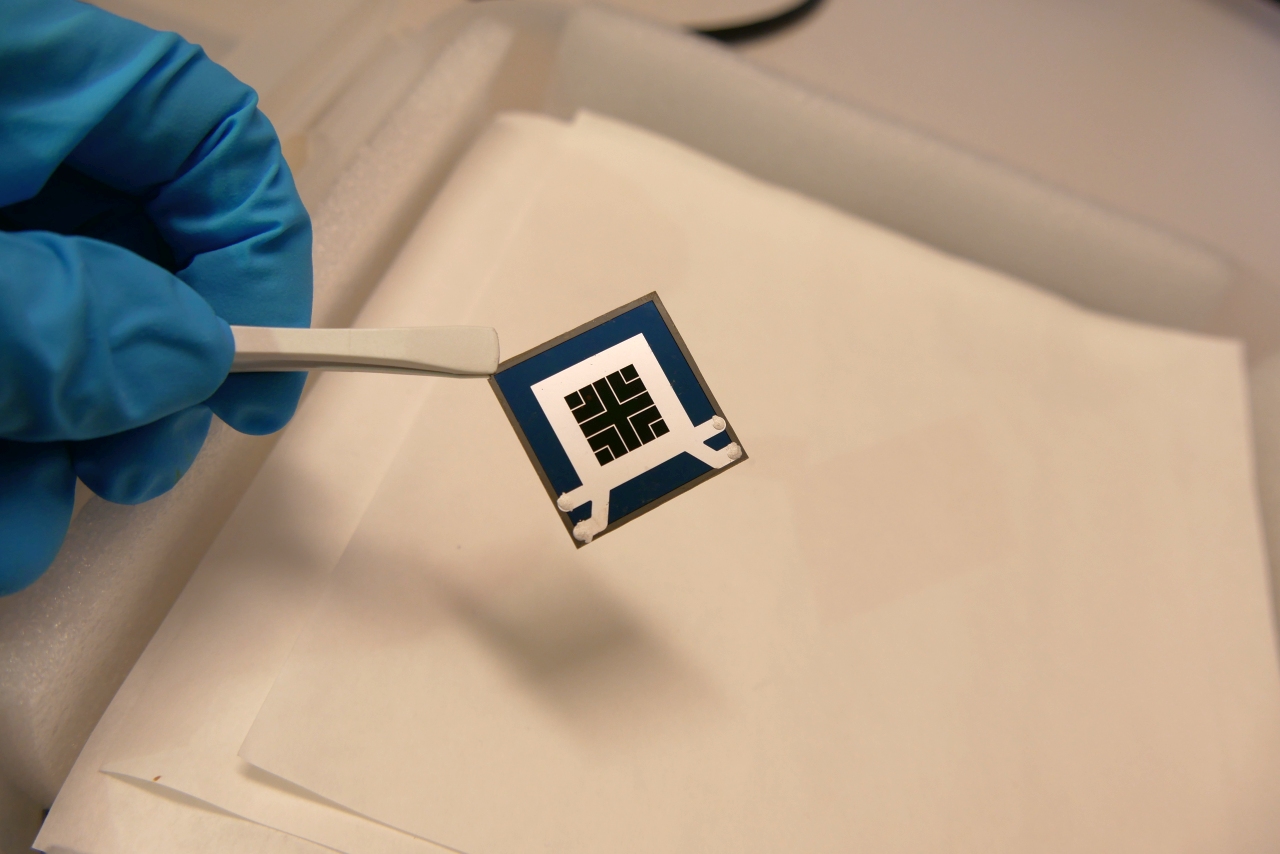News #31
Laboratory cell demonstrates the huge potential of perovskite-based triple-junction solar cells
Perovskite-silicon tandem solar cells achieve efficiencies of over 30 percent and are frontrunners for the next generation of solar cells. A research team at the Fraunhofer Institute for Solar Energy Systems ISE has now been able to demonstrate that triple-junction solar cells consisting of perovskite-perovskite-silicon subcells also hold considerable promise and have an even greater efficiency potential than double-junction tandem cells. As part of the Triumph research project funded by the European Commission and the RIESEN research project funded by the German Federal Ministry for Economic Affairs and Climate Action, the team developed a triple-junction solar cell with an open-circuit voltage of over 2.8 volts. This record figure confirms that the cell has excellent material properties for generating electricity, leading the scientists to deduce that it has an efficient solar cell architecture.
Traditional silicon solar cells have an open-circuit voltage of between 0.7 and 0.8 volts. “The voltage of over 2.8 volts measured for the perovskite-perovskite-silicon solar cell suggests that the technology is extremely promising for electricity generation,” says Dr. Juliane Borchert, Group Leader for Perovskite-Silicon Technologies at Fraunhofer ISE and at the University of Freiburg. “This is a record value for this type of solar cell and demonstrates how photovoltaics combining perovskite and silicon offers huge untapped potential.”
The performance of a solar cell is determined by three main factors: the open-circuit voltage, short-circuit current and fill factor. Of these, the open-circuit voltage is most strongly influenced by the intrinsic properties of the materials used. The two other factors are heavily dependent on how well the solar cell is implemented into the system. A high voltage therefore indicates that the basic physical characteristics of the solar cell are appropriate and that the fundamental aspects needed for a very efficient solar cell are in place. The research team’s results were published today in the ACS Energy Letters journal:
https://pubs.acs.org/doi/10.1021/acsenergylett.3c01391
Research institutes from around the world have developed perovskite-silicon tandem solar cells with efficiencies greater than 30 percent. In its most recent internal laboratory measurements for a solar cell of this kind, Fraunhofer ISE also recorded an efficiency of 30.0 percent. “Tandem photovoltaics holds the key to higher efficiencies,” says Prof. Dr. Stefan Glunz, Division Director for Photovoltaics at Fraunhofer ISE. “While we are currently in the process of scaling up the development of perovskite-silicon tandem solar cells and readying them for use in industry in our Pero-Si-SCALE project, it’s also fantastic to see how triple-junction solar cells hold so much potential for advancing the concept in the future.”
Downloads and Links
Last modified:
